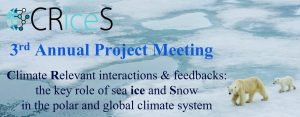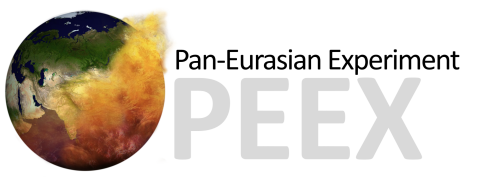Project Description

The 3rd Annual Meeting of the Horizon-2020 project CRiceS “Climate Relevant interactions & feedbacks: the key role of sea ice and Snow in the polar and global climate system” (https://www.crices-h2020.eu) took place in a hybrid mode (onsite/online) during 28-31 October 2024, Bologna, Italy. The event took place at the Centro Congressi of the CNR Area Territoriale di Ricerca, Bologna. About 100 participants (both onsite and online) attended the event.
On 28 October, the CRiceS Open Science Day was arranged which started with a welcome and research highlights talk from the CNR organizers, and a series of oral talks by early career researchers (ECRs). The presentations included: Ocean Response to Meltwater Perturbations: Insights from the SOFIA Initiative; Integrated dynamics and thermodynamics modelling of sea ice and waves in the Antarctic marginal ice zone Antarctic sea-ice thickness: A model-satellite intercomparison study; Limited Benefits of Increased Spatial Resolution for Sea Ice in High-resolution Climate Simulations; Improving the representation of the snow over sea-ice in the SI3 model; Recent advances in modeling aerosols over sea ice with WRF-Chem; Evaluating the representation of aerosols in the Arctic in TM5 using MOSAiC expedition data; Towards an improved Arctic aerosol representation in NorESM2; Evaluating Radiative Transfer Models and Their Influence on Ice Algal Phenology; Arctic DMS production and emissions; Cross-border dimensions of Arctic climate change impacts and implications for Europe; The contributions of SST and Sea Ice to the future response of Northern Atlantic Storm Track. Presentations followed by discussions and comments from ECRs.
On 29 October, the CRiceS Project Officer Karsten Gödderz, outlined the European Commission perspectives. Then, discussions of WPs 2 and 3 status, progress, results and achievements took place. Posters were displayed on the evening session, and included: Future of Arctic DMS emissions and production; Composition of the central Arctic atmosphere during MOSAiC; Assessing the representation of Arctic Sea ice and Marginal Ice Zone in ocean/sea ice reanalyses; Influence of warm air intrusions on Arctic satellite sea ice concentration time series; Ice algal phenology: Insights from radiative transfer models; Parametrization of fractures, leads and pressure ridges in models; Characteristics of natural Arctic aerosols from a wide range of local sources during ARTofMELT; Impact of surface turbulent exchanges above ice on the atmosphere and on teleconnections with lower latitudes; Frazil ice explains the high iron enrichment in Antarctic sea ice; Influence of fluorescent primary biological aerosol particles on low-level Arctic clouds; Impacts of DMS representation on modeling Arctic aerosols; Improving the representation of the snow over sea-ice in the SI3 model; Impact of changing sea ice and SSTs on the mid-latitude circulation.
On 30 October, a series of invited talks was given by different projects, such as PolarRES (“Exploring future polar climates”; https://polarres.eu), CleanCloud (“Clouds and climate transitioning to post-fossil aerosol regime”; https://projects.au.dk/cleancloud/cleancloud-project), CERTAINTY (“Cloud-aERosol inTeractions & their impActs IN The earth sYstem”; https://certainty-aci.eu), SASIP (Scale Aware Sea Ice Project; https://sasip-climate.github.io), and CryoSCOPE project focusing on permafrost, snow and glaciers in Europe and in the Indian Himalayas.
A special session took place after talks to ask questions, make comments, and find synergies with projects. Then, CRiceS General Assembly took place, followed by communications/ stakeholder engagement/ policy briefs & WP4 session with discussions. At the end the CRiceS coordinators (Jennie Thomas & Risto Makkonen) discussed plans for the near year and beyond, and synthesis.
Text by: Tuukka Petäjä, Alexander Mahura (Univ of Helsinki, INAR)
